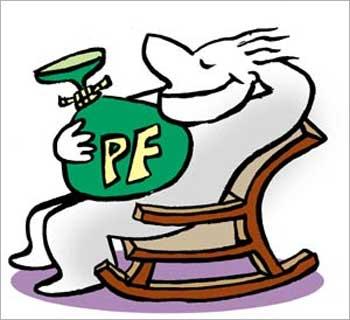 | « Back to article | Print this article |
Pension plans: The smart way to retirement
Retirement can happen rather unexpectedly if you do not plan for it beforehand, carelessly thinking that you still have plenty of time. One day you might wake up and find yourself on the threshold of retirement without money or any particular plans for the future. In order to avoid such a situation it is better to start planning for your retirement right now.
Why retirement planning?
Economic prosperity has given more disposable income in the hands of Indians while better healthcare has improved their life expectancy significantly. Today, an average Indian lives well beyond the retirement age of 60 years. While this should be good news for all, people unprepared for retirement will find themselves in quite a fix. More people are now starting to realise the importance of retirement planning and the need to be self-dependent even in their old age.
A survey done in late 2008 by Sun Life Financial revealed that when it comes to retirement planning, only about 4-5 per cent of the Indian working population, mainly government employees, are covered by a pension plan. The rest depend on their children or their savings for post-retirement life. The average Indian also looks for a long working life and estimates the corpus required for post-retirement life to be 100 times their monthly household income at the time of retiring.
Illustration: Dominic Xavier
How to start?
Retirement planning involves many aspects -- start with deciding when you wish to retire and what you wish to do post that. This will help you to arrive at how much you will need when you retire. You can simply arrive at a monthly figure that you will require to meet your needs. This in turn will lead you to ways of building that corpus that will secure your retired life. Inflation devalues money, so it is important to route your savings to vehicles that can provide you with the returns you need to beat inflation and build the required corpus.
Where to invest?
The avenue you choose to invest in will depend on the tenure, your appetite for risk, the returns you require to build the corpus and so on. If you have very few years left to your retirement, then choosing a risky profile like only equities may be a bad idea. On the other hand, if you are still young and retirement is a long-term plan for you, then not investing in equities would also be a bad idea. A combination of tenure and returns required for you to arrive at the required corpus is ideally what you should concentrate on.
Some common avenues for retirement planning are PF, PPF, superannuation, gratuity and so on. If you are open to taking risk and if you have sufficient time for your retirement, you could invest in a basket of instruments like PPF, FDs, bonds, mutual funds, equity, property, etc and gradually move the growth instruments to debt over time. Property may be a good idea at retirement, as it can give consistent rental income. If you start early, the composition can be aggressive initially and can turn more and more sedate when nearing retirement. Early starters need not worry about market volatility. They can weather the storm as they are long-term investors.
Illustration: Uttam Ghosh
Pension funds
Another popular and much advised investment vehicle for retirement is pension. Pension is a fixed amount of money that is paid by the government (in case of government employees) or by insurance companies (if an individual has invested in a pension plan) either monthly or quarterly for his/ her expenditure. The primary objective of a pension plan is to help you provide for your financial needs in your post retirement years. Pension plans provide with a regular, steady and reliable income that will help you take care of the much-needed basic necessities post retirement. It helps you lead a hassle-free life after completing your working life.
Life expectancy is increasing, medical costs are skyrocketing and the cost of living will be much higher by the time you retire. If these reasons aren't enough to start investing in a pension plan, then think of being dependent on your children all your retired life. Pension plans will give you the independence that you are accustomed to all through your working life.
There are two kinds of pension policies available:
- Immediate annuity
- Deferred annuity
Annuities are periodic payments received for the policy purchased. In the immediate annuity, you will invest a lump sum amount once and start receiving pensions immediately. This is suitable for the people who are nearing retirement. In a deferred annuity, you will start building a corpus at a young age. On retirement, you will receive annuities out of this corpus. This is suitable for the young people who are at the mid of the retirement age.
Deferred annuity or pension plans are now offered by both government as well private insurance companies. Depending on your risk profile and tenure left for retirement, you can choose to invest in market linked plans or traditional plans that invest mainly in debt instruments.
Tax aspect
The main disadvantage of pension plans is the taxability of the same. The corpus built through a pension plan is taxable if withdrawn. One third of the corpus or half if you are not in receipt of gratuity, can be withdrawn tax free. The remaining corpus has to be necessarily invested in an annuity plan and the annuities received from this is taxable as income in the hands of the recipient. Even though annuities are taxable, Sec 80C benefit is available for investments in pension plans.
You could invest a part of your retirement corpus (10-15 per cent) in a pension policy. Build a corpus that can make you financially independent and that can be used in case of any medical and daily expenses.
Illustration: Uttam Ghosh


